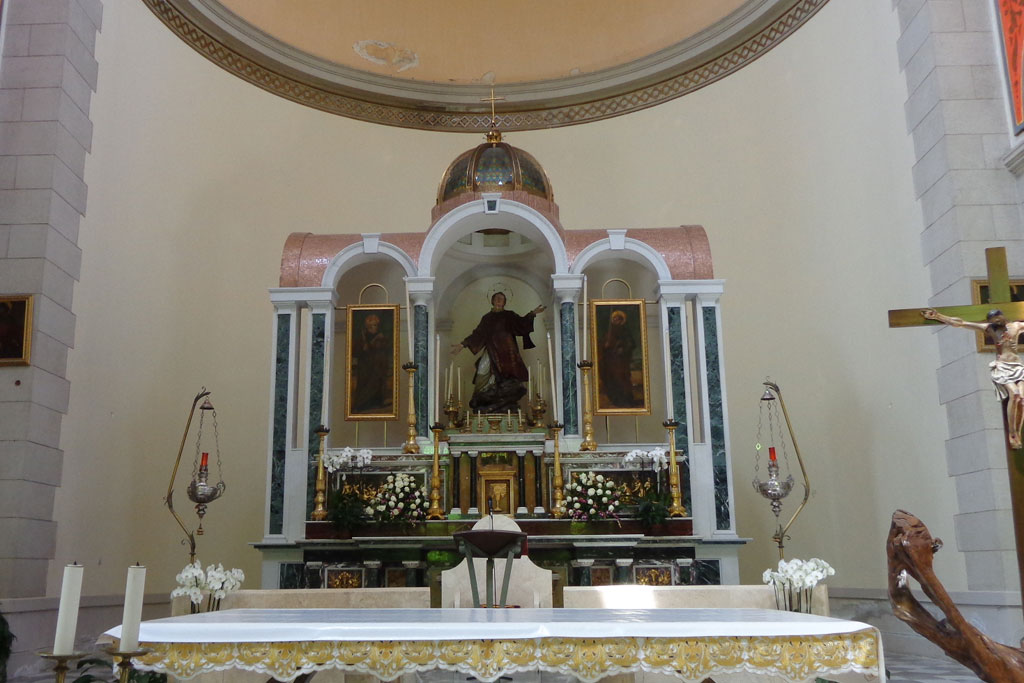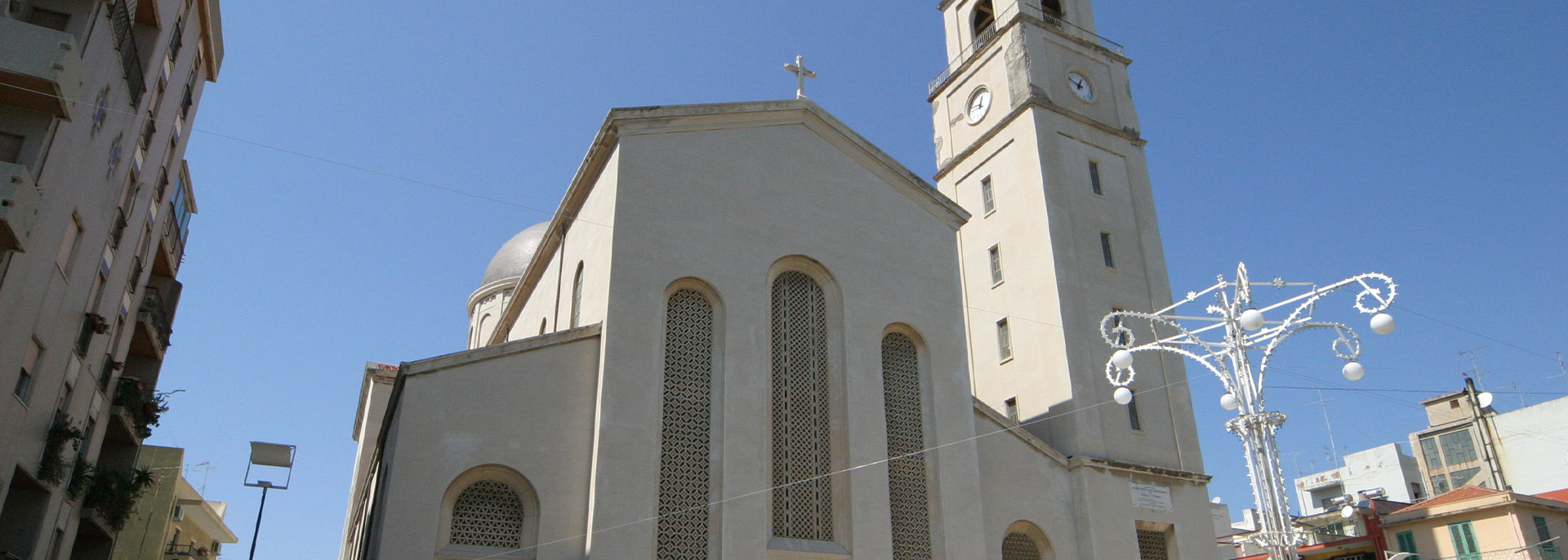Designed by architect Francesco Valenti, whose planning was partly modified by engineers Mario Pagano and Giovanni Crinò, the cathedral was built on an area obtained by demolishing the 18th-century Municipal Theatre and the 17th-century Church of Our Lady of Sorrows to replace the old one, which had been closed to worship because it had been severely damaged during the bloody battle of 20 July 1860 between the Bourbon and Garibaldi troops. It was inaugurated on 27 December 1953 by Archbishop Giudo Tonetti, Coadjutor Archbishop of Messina, who consecrated it by dedicating it to Saint Stephen Protomartyr, the main patron saint of the 'Most Noble City'.

Saint Stephen’s Cathedral
The cult of this saint dates back to 1481 when some Chaldean priests of the Orthodox faith, translating an old parchment with oriental characters, revealed how the bones of an arm found twenty years earlier inside the altar of the small Byzantine church of S. Maria del Boschetto belonged to the Protomartyr and had been placed there in the Middle Ages.
The people and clergy of Milazzo obtained consent to venerate these relics, so in 1521 they made St. Stephen the new Protector of the city.
The festivity was set for the first Sunday in August to celebrate 3 August 1461, the day of the invention of the Holy Arm. The building is tripartite with the aisles divided by five arches.
On the right-hand nave is a large altarpiece of St. Andrew and St. Peter (1800), while the altar of St. John Bosco precedes the transept section with the altar of the Sacred Heart of Jesus (1956) with an 18th-century papier-mâché statue in the centre. On either side of the altar are two paintings by Scipione Manni: The Adoration of the Magi (1755) and The Martyrdom of St Sebastian (1753). On the front wall is the Crucifix in wood and stucco by an unknown author, repainted in 1961. In the left aisle is a lithic bas-relief of the Madonna and Child of the Florentine school, while the stoup is a Gaginesque work sculpted for the Renaissance Church of the Annunziata al Castello. Immediately afterwards we find the panel of the Nativity, or Adoration of the Shepherds, dated 1573, and again the altar dedicated to St. Rita (1964), which houses the statue of the Saint (1932).
This is followed by the painting dedicated to the Martyrdom of St Stephen (1729) by Letterio Paladino from Messina. The adjacent altar, dedicated to the Immaculate Heart of Mary, is from 1957. Then we find the painting of the SS. Martiri Milazzesi (victims, between 251 and 257, of the persecution carried out by Tertullus, governor of Sicily, by edict of the Emperor Decius), by an unknown artist, commissioned in 1622 by the Jurati for the old cathedral. Two other works by Scipione Manni are present inside the Mother Church: on the front wall of the transept, a canvas, the Madonna del Lume (1754), and the Paschal Veil, used during Holy Week.
The Renaissance baptismal font comes from the Old Cathedral, while the high altar is a neo-classical work from the late 18th century. Between 1991 and 1992, the structure behind it was built to house the statue of St Stephen, created in 1784 by sculptor Filippo Quattrocchi Romano and at the sides of which are two panels by Antonello de Saliba dated 1531: St Peter and St Paul.
In the presbytery are three more works by this artist, in the centre the Nativity and at the sides two small paintings representing St. Rocco and St. Thomas. Above is the Annunciation, attributed to the Messina painter Antonio Giuffrè, as well as, on the opposite side, the enthroned St. Nicholas and stories from his life (1485). In the polychrome and decorated coffered roof are two frescoes depicting episodes from the life of St Stephen Protomartyr. The eight medallions on the two walls of the nave depict: St. Stephen, St. Francis of Paola, the Milazzesi Martyrs, St. Leo II Pope, St. Gaetano, St. Anthony of Padua, Blessed Hannibal Mary of France and St. Eustochia Smeralda Calafato. The sacristy is furnished with 18th-century furniture, while the bell tower features five bells, four of which come from the Old Cathedral.
The Treasury consists of a gilded silver monstrance from the 1500s, probably donated by an English prelate at the time of Henry VIII Tudor, the reliquary of the arm of St. Stephen in silver and gilded silver from 1688, another reliquary in silver with the wood of the Holy Cross, two embossed silver crowns from the 17th century and the silver ray that adorns the head of St. Stephen on the solemnity.
In the small church of Santa Maria del Boschetto (contrada Parco), a lead box was found over five centuries ago, in which there was a relic and an ancient parchment written in characters that could not be deciphered.
In the year 1481, as recounted in his "Milazzo sacro" (1696) by Father Francesco Perdichizzi, a Capuchin, and in the transcription that engineer Domenico Ryolo made of the copy drawn up in the 19th century by Giuseppe Piaggia, "passing through Milazzo some Chaldean priests and reading the writing they found it to be their own language and reported that among these relics was the arm of St. Stephen Protomartyr".
"The people of Milazzo did not give those priests full faith, but having recourse to the archbishop, he took it upon himself to take better care to have the writing recognised again.
The translation of the Chaldean priests was finally recognised before 1521 and from then on, the relic was placed in the Major Church and the Protomartyr Saint began to be celebrated with special devotion.

INDIRIZZO
Saint Stephen's Cathedral Piazza Duomo, Milazzo (ME)







